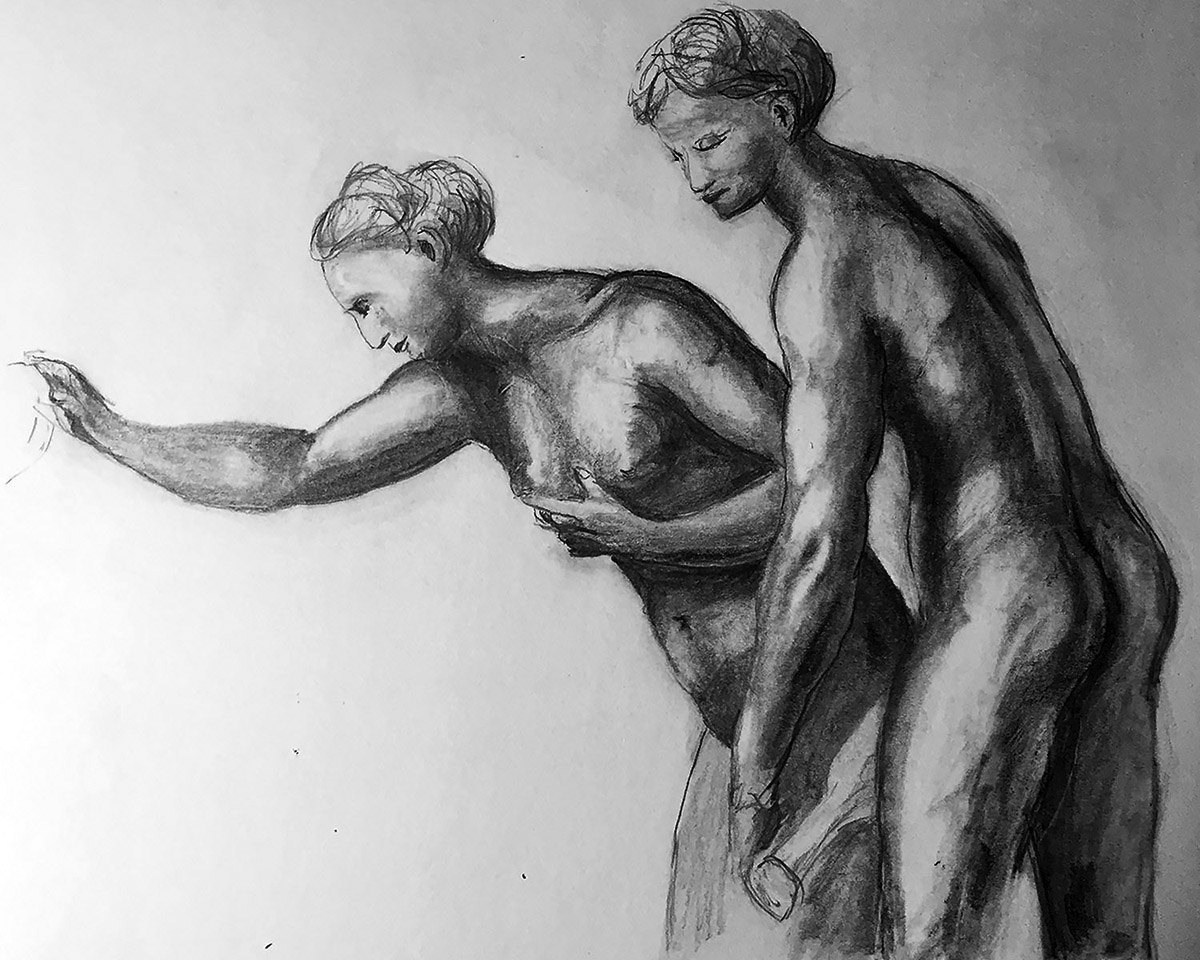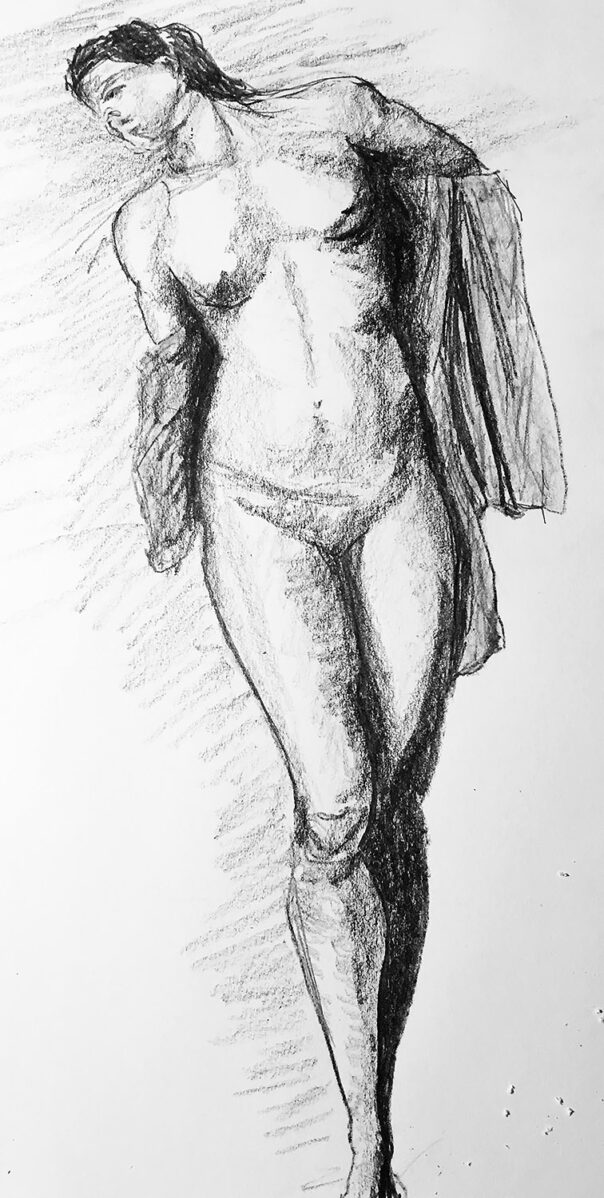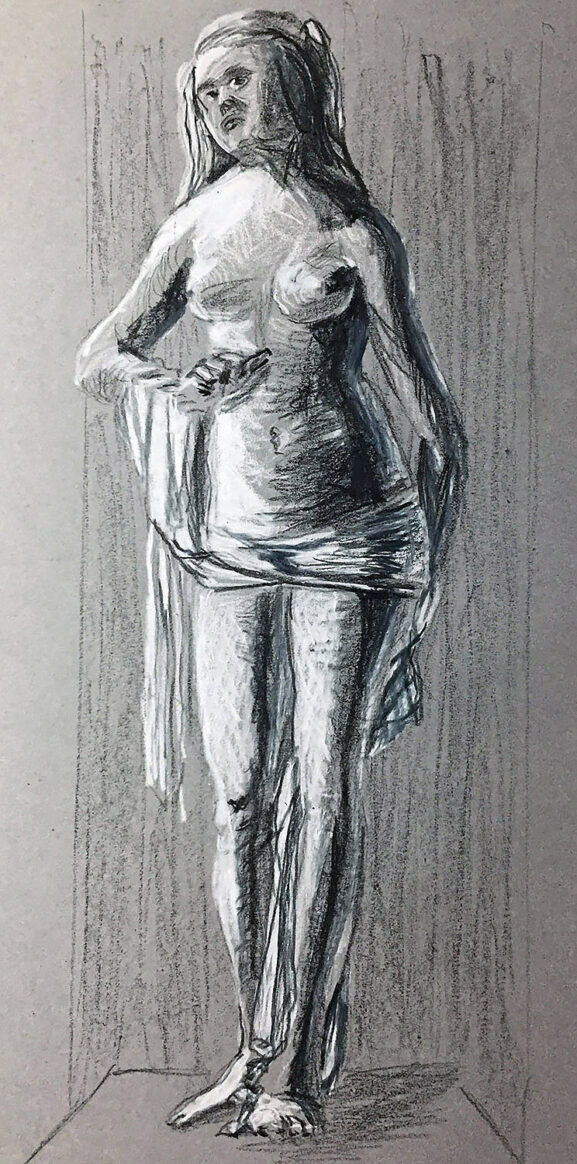
The image in this blog post is a copy in graphite pencil of a Raphael drawing originally done in red chalk. The subject is “The Three Graces”. In Raphael’s drawing there are three nude figures representing, you guessed it, The Three Graces. I only drew two. Why did I only draw two? Because Raphael is Raphael and I am me. Raphael was a great artist and I am, like I said before, myself, that of which I am. At this point I would say something self deprecating like; I ain’t no Raphael but today I need to conserve as much self confidence as possible. So let us talk about The Three Graces. I must warn you up front that whenever I try to learn about Greek Mythology my brain shuts down. I mean like I have to lie down and take a nap in the fetal position type of breakdown. So in the interest of both of us I will basically just cut and paste whatever information I come across.
“She glows like a EcoSmart Light Bulb.”
The Three Graces, also called Charites, come from Greek mythology. In his work “Theogony” Hesiod describes three Graces. So let me introduce to you, the reader, the Three Graces.
First off we have Aglaea. She represents Radiance. She glows like a EcoSmart Light Bulb. I am neither endorsed or have any professional or personal relationship with the EcoSmart brand. I was just trying to be clever.
Next up we have Euphrosyne. She represents “Joy”. She is basically the Selective Serotonin Re-uptake Inhibitor (antidepressant) of the ancient world. Her side effects might include:
• Nausea, vomiting or diarrhea
• Headache
• Drowsiness
• Dry mouth
• Insomnia
• Nervousness, agitation or restlessness
• Dizziness
The last but not certainly least grace, even though that is probably the one I left out in the drawing, is Thalia. She is a Mexican singer, businesswoman, and former actress. Born in Mexico City, she first achieved recognition as a member of the successful pop group Timbiriche from 1986 through 1989. Wait that’s the wrong Thalia. Anyway, she represents Flowering. Her parents were Zeus and Eurynome. I’m starting to get sleepy. That’s all for now.
Click here to see the drawing of the Three Graces by Raphael Sanzio.




